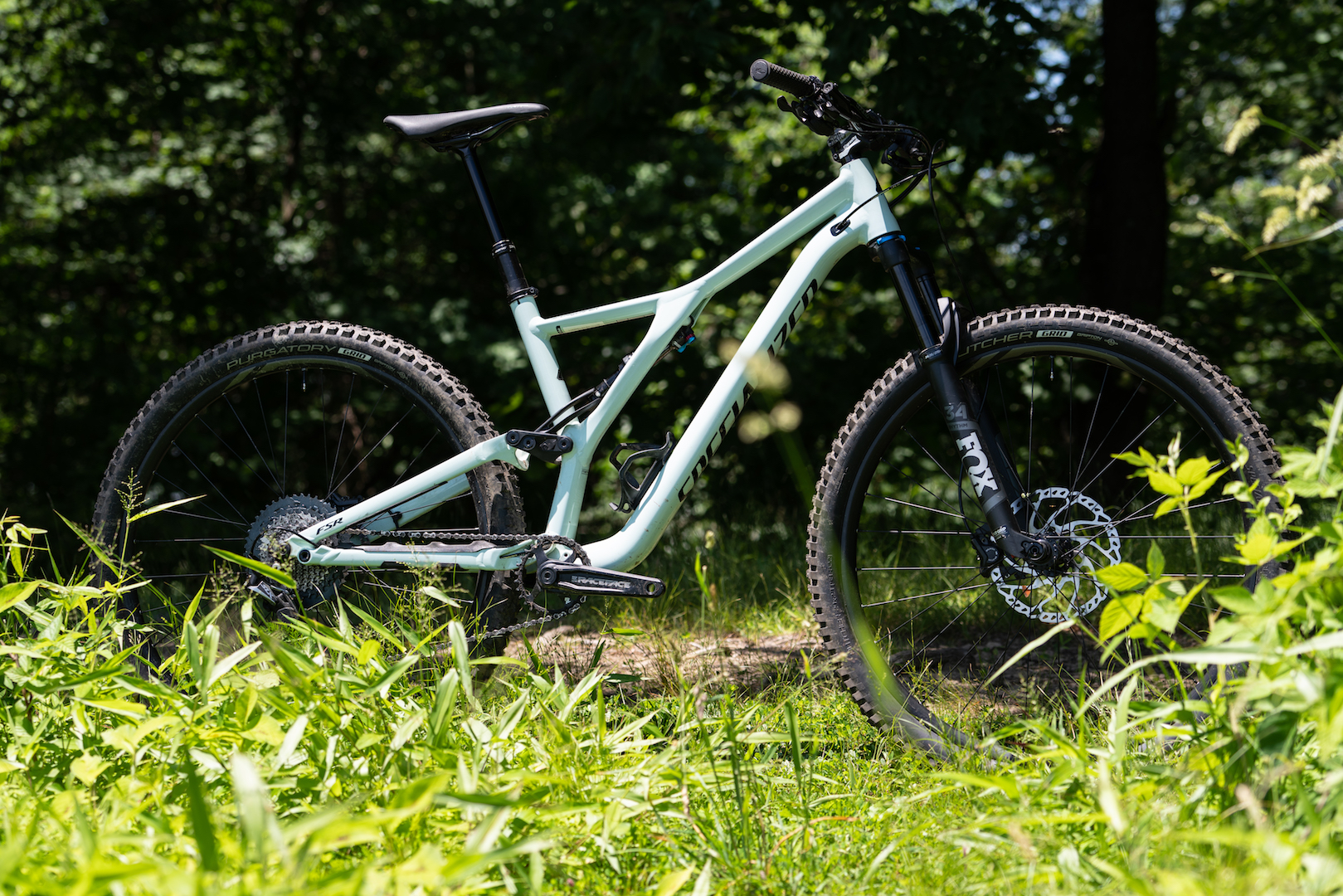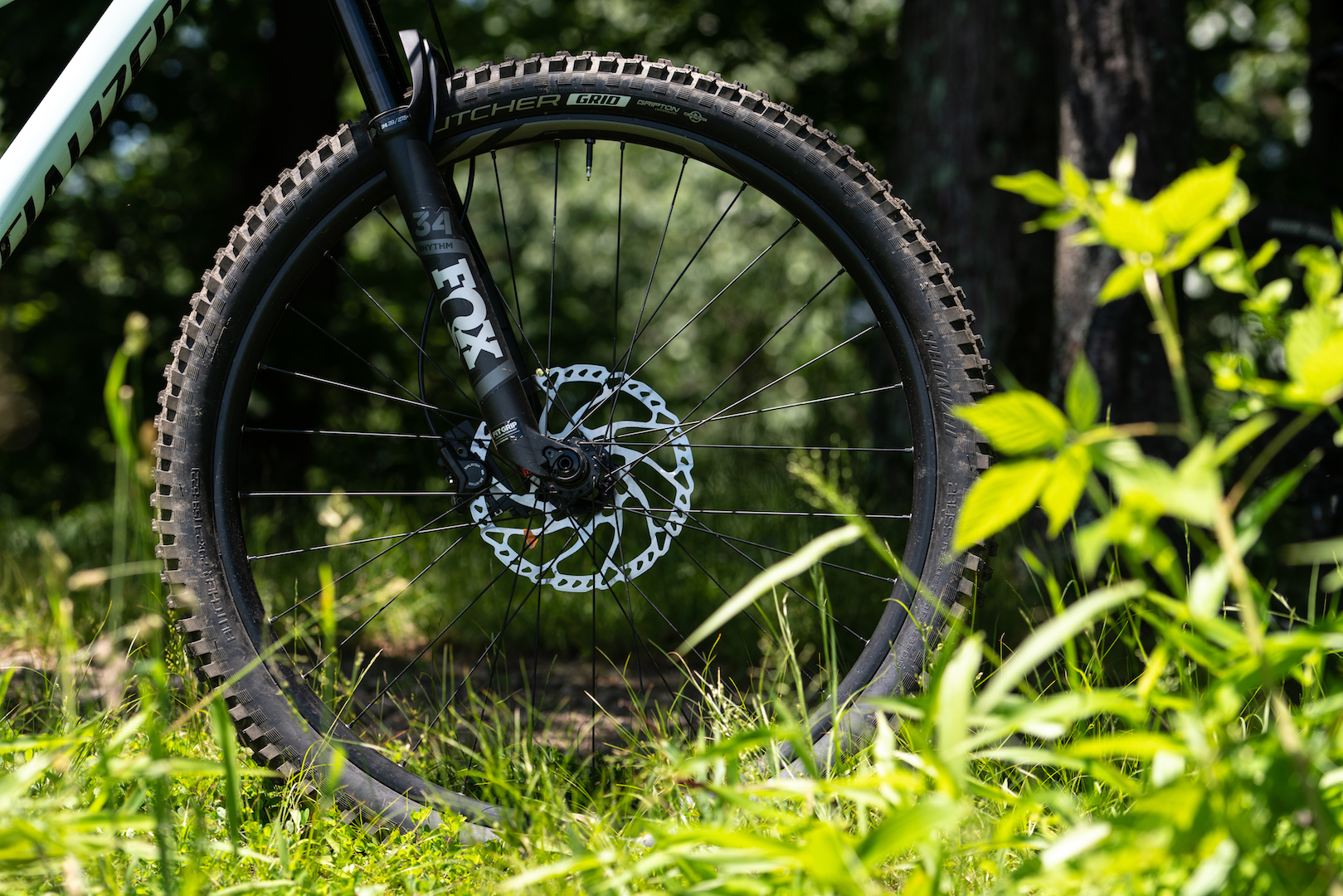Specialized Stumpjumper ST Comp Alloy 29
Originally posted on September 26, 2019 at 0:09 amINTRO
Back in ‘81 when the first Specialized Stumpjumper hit the floors of shops, it sported a rigid fork, cantilever brakes, 26-inch wheels and a high-post. Today, while the Stumpjumper name is consistent, the bike itself has changed a lot over the decades. Available in three modes of rowdiness with options in carbon or aluminum and in 29-inch or 27.5, today’s version has the ability to fit 3-inch tires.
The Stumpjumper Short Travel (ST) 29er offers a 130 mm fork with 120 mm rear travel while the standard Stumpjumper 29er offers 150 mm up front and 140 mm out back. Both bikes increase the rear travel by 10 mm for the 27.5 models. The Stumpjumper EVO, which is almost in its own class, offers the same amount of travel as the standard Stumpjumper but has some major geometry tweaks.

THE BIKE
Here, we take a closer look at the Stumpjumper ST Comp Alloy 29er model, and for $3k and some change, you can land yourself a beautiful gloss white sage colorway with minimal branding and a solid build kit. This gem is sporting a 150 mm (sizes M-XL) X-Fusion dropper, and suspension duties are handled by Fox with a 34 Rhythm upfront and DPS Performance to the rear. Shimano keeps the wheels spinning with the company’s SLX 1×11 groupset while stopping power is delivered to the 200/180 mm rotors by way of Shimano’s Deore brakes.
Do not underestimate this “lower tier” spec list and unbranded Shimano brakes. Albeit a wheel swap for some higher engagement hubs, the Stumpy ST Comp Alloy performs exceptionally well. And for someone who often finds himself more often on top tier bikes, the wheels were really my only gripe with the stock components, but that’s the case with most complete bikes. Without a doubt, there are prettier and lighter components out there, but that’s the beauty of this bike; as parts wear or break, you can slowly make those upgrades over time.
Specialized designed the asymmetric frame around the company’s patented FSR (Future Shock Rear) suspension system. A single-sided arm between the top tube and seat tube runs parallel with the shock adding stiffness to the front of the bike while reducing unnecessary weight. This design was first seen on the company’s downhill bike, and aside from function, it creates a really nice looking bike with smooth lines. Other notable features include a standard BSA threaded bottom bracket, nonproprietary metric sized shock, and a Flip Chip that adjusts the bottom bracket height by 6 mm and slackens the head tube by half-a-degree if that’s what you’re looking for.

THE RIDE
The first stop in testing the Stumpjumper ST was Alafia State Park in Florida, which is loaded with short punchy climbs, drops, berms and gap jumps. In a nutshell, it’s the perfect playground for mountain bikers who would rather session than hammer. The Stumpy ST felt comfortable right away, and I quickly found myself at ease going into sections blind, given a local’s wheel was not far out of reach. Riding with the locals, with far more skill than my own and also riding a Stumpy ST, I saw them backflip doubles, boost a 30-foot swamp gap and even spin a 360 like it was a 26-inch dirt-jumper. If this sounds like your cup of tea, the Stumpy ST is more than capable.
As for those who are more inclined to tackle Farlow Gap in the Pisgah National Forest than propel themselves across an alligator-infested swamp, or simply get out for an hour ride in their local park, the Stumpy ST is pretty damn good at that too.

Weighing in over the 30-pound mark, the Alloy Comp model carries its weight well. At speed, the bike feels agile and willing to take on more than one would expect for a “Short Travel” trail bike. At slower speeds, the longer wheelbase requires a little more mustard from the rider;, this was especially noticed in technical sections with tight corners. As a climber, the Stumpy ST is a bit of a mixed bag. Overall, it performed really well, excelling in the short punchy steeps of Alafia, longer technical climbs requiring a lot of finesse over exposed roots and of course, two-track climbs where you can lock the suspension out and get after it. Where I felt the bike fell short was in that smooth rolling terrain where the climbs were subtle enough that it wasn’t worth flipping the lockout but was enough that any momentum you had was lost. To be fair, I would say the bike sides more on the trailside than the World Cup cross-country end of the spectrum. There were even times that I forgot it was “just” 120 mm, tackling features that require more commitment than I am typically willing to give.
CONCLUSION
Specialized did a fine job in the latest iteration of the Stumpjumper. I particularly appreciate moving away from the use of proprietary components allowing riders the choice to tweak their suspension and, of course, the use of a threaded BSA bottom bracket. In particular, the ST Comp Alloy 29er is a fantastic entry-level trail bike. The aluminum frame will survive progression along the learning curve, the parts can be upgraded and it’s not going to empty your piggy bank.
Price: $3,020
Sizes: S, M, L (tested), XL
Online: specialized.com
Tester: Scott Williams
Age: 33
Weight: 165 lbs.
Height: 5’ 11”
Inseam: 32.5”
Reach: 17.9”
Stack: 25”
Top Tube: 24.6”
Head Tube: 67.5°
Seat Tube: 75.1°
BB Drop: 1.53”
Chainstays: 17.2”
Weight: 31.8 lbs.
without pedals, specs based on size tested